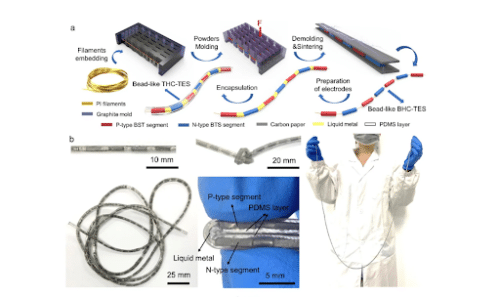This research team is developing wearable technology to keep people cool during the summer.
A Chinese-led research team has invented a fabric that can generate power from heat for wearable electronics or help people cool down in the summer. According to the researchers, the thermoelectric textile, which resembles a wristband and can be twisted, knotted, bent, and stretched, can provide power for a pedometer or LED array.

“It feels like a normal wristband when worn on the wrist,” said Zhang Kun, corresponding author of the study and a professor at Donghua University’s school of Textiles in Shanghai. “Textiles can be a good foundation for wearable devices. We can use thermoelectric strings and textiles to make a comfortable thermoelectric generator that can create electricity and adjust the temperature of the body.”
Thermoelectric materials are employed in a variety of applications, including aircraft, infrared detectors, and computer chips, and produce an electrical voltage when temperature variations between materials exist. Heat is transmitted from one side to the other when a voltage is given to the material, creating a cooling effect on one side – a principle used in heat pumps and some small freezers.
Zhang and his colleagues investigated the possibilities of combining these materials with textiles. The textile showed outstanding mechanical and thermoelectric qualities, according to the study, with an output voltage of 0.28 volts at an outside temperature of roughly 8 degrees Celsius (46.4 degrees Fahrenheit), indicating that it might power small electrical devices.
“Because of temperature differences between the body and the environment, thermoelectric textiles, in theory, can generate power around the clock,” Zhang said. More importantly, Zhang and his colleagues claimed that they were able to use the technique to reduce body temperatures by several degrees for the first time. He stated that his group was working on a form of flexible air-conditioned apparel that could reduce temperatures by up to 15 degrees Celsius.
The research has been published in the journal Energy & Environmental Science.






